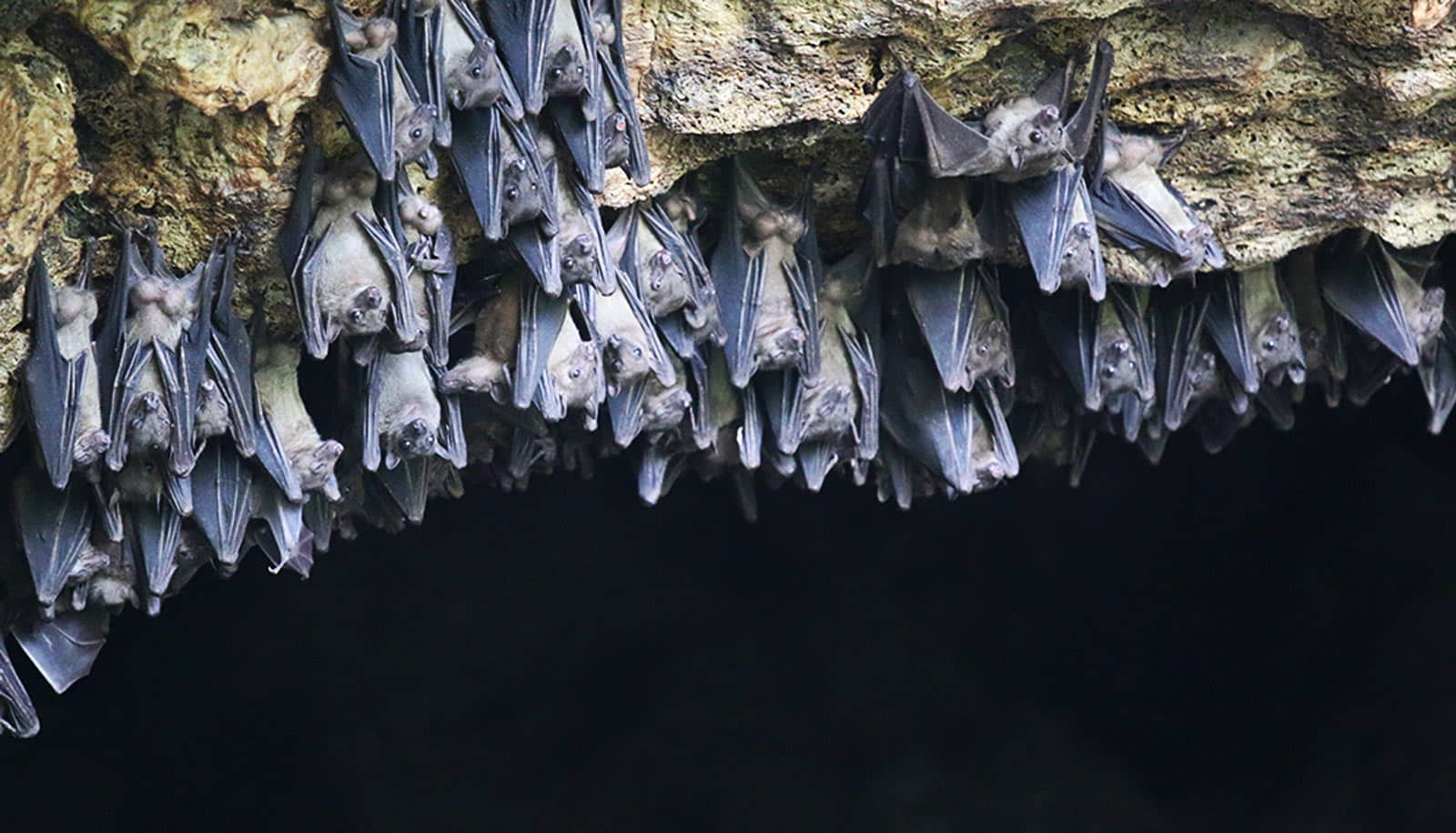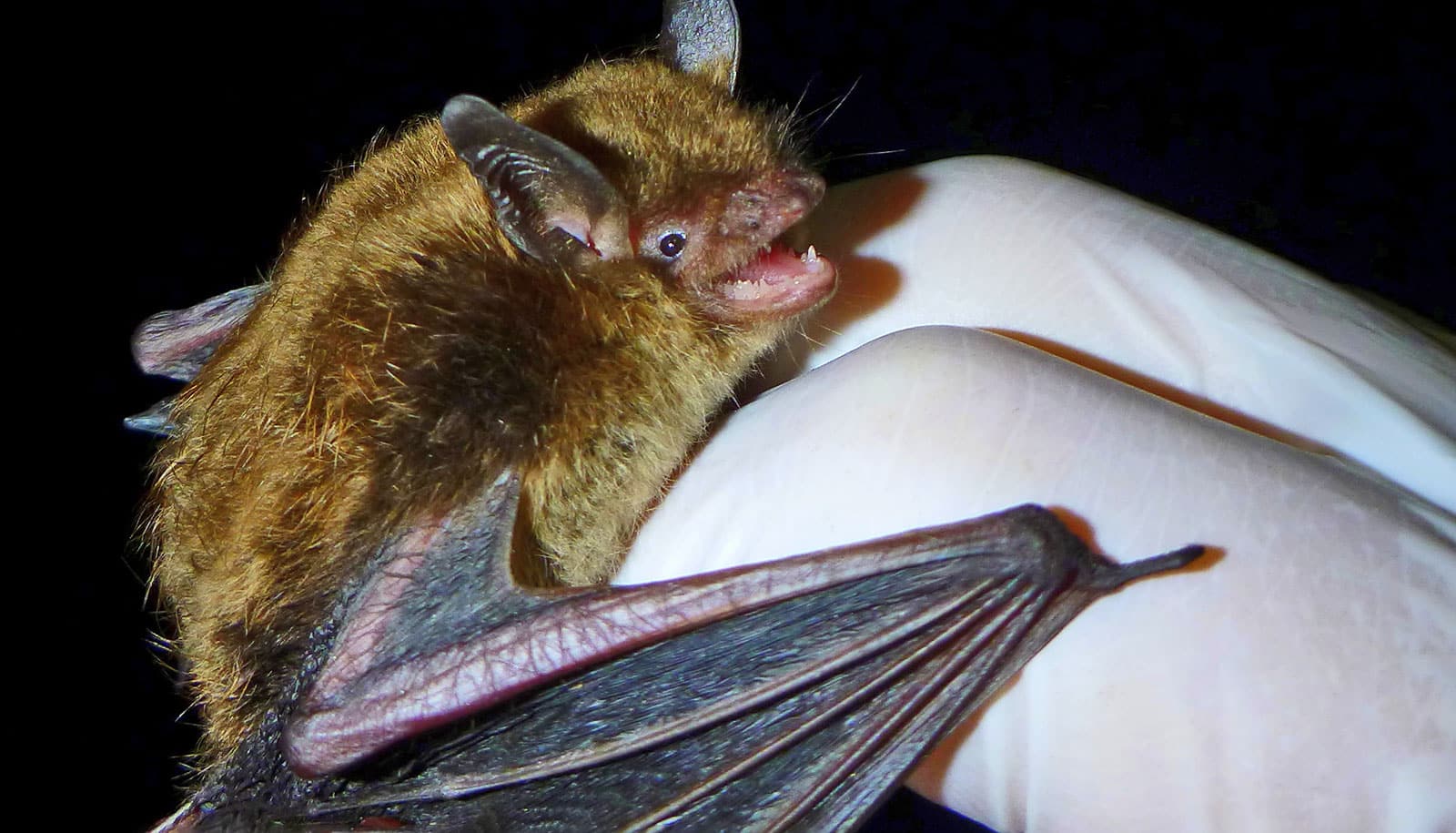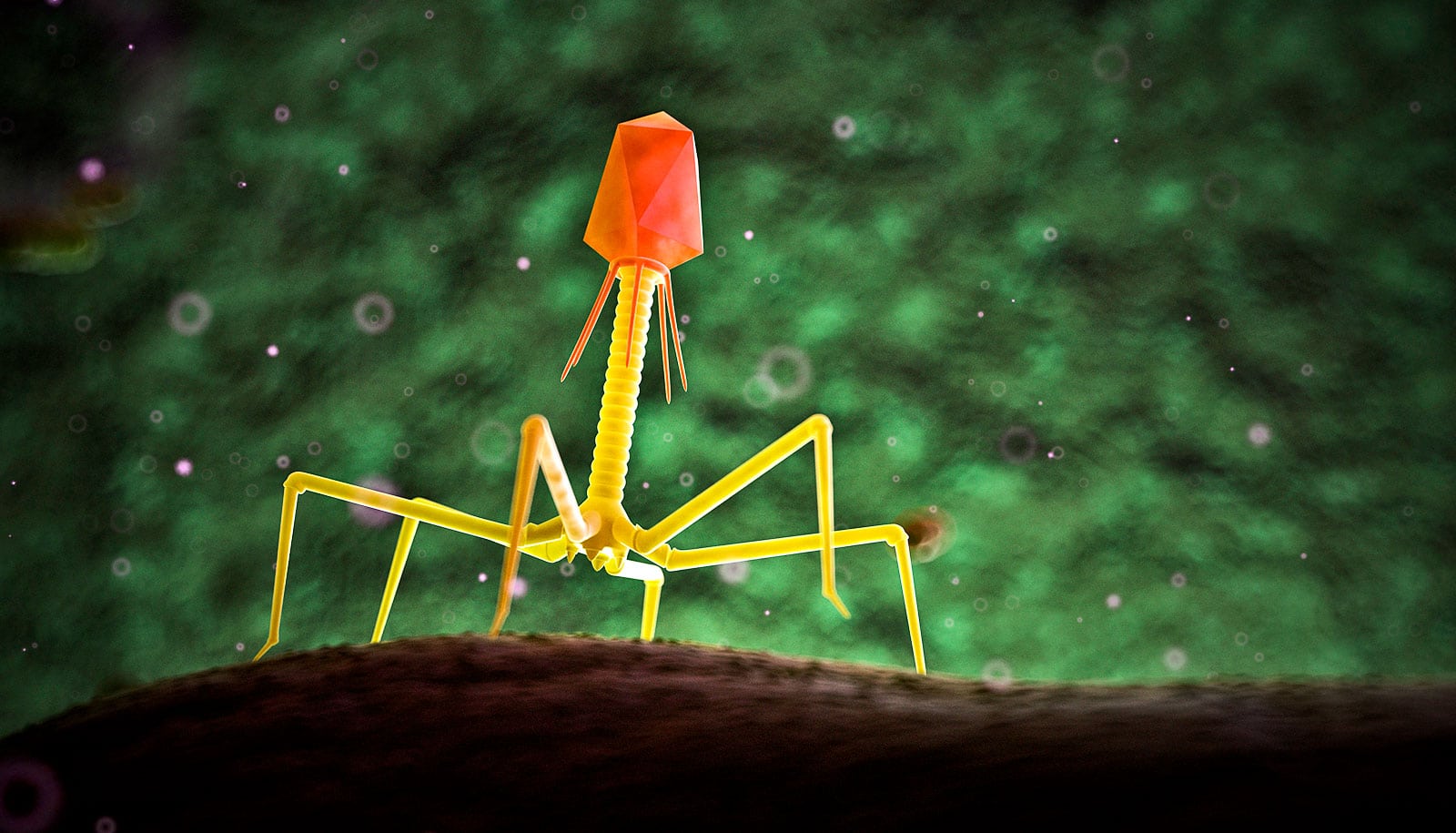The newly-sequenced genome of an Egyptian fruit bat from a cave in Uganda offers clues as to how bats harbor and transmit deadly viruses—but don’t get sick themselves.
Researchers were investigating a 2008 case of a 44-year-old woman from Colorado who returned home from a 2-week safari in Uganda and developed a severe headache, chills, nausea, vomiting, and diarrhea. Then came a rash, abdominal pain, fatigue, and confusion.
Doctors eventually diagnosed her illness as Marburg disease, a virus from the same family as Ebola virus, and one of the most deadly pathogens to infect humans. The tourist had likely caught it during a visit to Python Cave, by touching rocks covered with bat guano. She survived, but a Dutch tourist who had visited the same cave and contracted the virus did not.
“Exactly what is going on in that transmission? What does an animal gain by hosting a virus for a very long time…”
The genome of Rousettus aegyptiacus, the Egyptian fruit bat, includes larger-than-expected families of genes related to the mammalian immune system. Specifically, researchers found large families of interferon and natural killer genes that differed dramatically from their counterparts in other mammals.
As reported in Cell, the findings may eventually lead to a deeper understanding of virus transmission, and better treatments for humans who become infected.
“What we learn from bats may help us in the development of pharmacological agents,” says Thomas Kepler, professor of microbiology at Boston University, and co-senior author of the study with Gustavo Palacios of the US Army Medical Research Institute of Infectious Diseases (USAMRIID).
“And more importantly, it may help us understand zoonotic transmission—how animals host a virus without being symptomatic, and pass it to humans. Exactly what is going on in that transmission? What does an animal gain by hosting a virus for a very long time, for co-evolving with the virus, so that when it’s transferred, it’s highly virulent in the spillover host?”
Deadly cargo
Bats have long been of interest to virologists, because they carry rabies, Kepler says. And while bats sometimes get sick from rabies, it rarely kills them.
“So there’s always been a thought that there might be something going on between bats and at least the rabies virus.”
In the 1990s, an outbreak of Nipah virus killed hundreds of thousands of pigs in Malaysia, and scientists traced the outbreak to a bat. “From there, interest in the relationship between bats and viruses really picked up,” says Kepler. Bats are now known to carry several deadly pathogens, including Marburg and a SARS-like coronavirus, and transmit disease via bite or exposure to saliva, feces, or urine.
But scientists still don’t know exactly how bats are able to carry such deadly diseases without succumbing themselves. So Jonathan Towner, a scientist with the Centers for Disease Control and Prevention’s Viral Special Pathogens Branch, decided to investigate the colony of Egyptian fruit bats implicated in the Marburg fatality in Uganda. He traveled to Uganda, captured uninfected bats, and brought them back to the CDC.
There, scientists extracted DNA from a single bat, and sent it to colleagues at USAMRIID for initial sequencing. The USAMRIID scientists sent their data to Boston University, where it landed on the desk of Stephanie Pavlovich, an MD/PhD student in Kepler’s lab and lead author of the new paper.
Surprises in the genome
It took two years for Pavlovich, working with her colleague Sean Lovett at USAMRIID, to painstakingly assemble the genome. Then they compared their Egyptian fruit bat genome to the genomes of other mammals, including a handful of other bats, humans, and guinea pigs. They looked broadly at first, and then focused specifically on areas known to be associated with the mammalian immune system.
“We were looking for gene families that had grown either much larger or much smaller than was expected, given the evolutionary history of this bat,” Pavlovich says. They also looked for genes with evidence of “positive selection,” the evolutionary process that propels new, useful genetic variants throughout a population.
“That allowed us to find a number of genes that were evolving at a faster rate in this bat, and then also a number of gene families that were much larger than we expected.”
The two gene families near the top of the “larger than expected” list were type 1 interferon genes, which are often called “the first line of defense” against viruses and have been implicated in the disease course of filoviruses like Marburg and Ebola, and natural killer—or “NK”—cell receptors.
Natural killer cells are a critical part of the human immune system, able to quickly recognize and respond to virus-infected cells. Finding them in the Egyptian fruit bat was a surprise, says Pavlovich.
“Folks had previously looked at a number of bat genomes and not been able to find any traditional NK cell receptors,” she says. “And so, when we saw these genes, it turns out that actually, yes, bats do have NK cell receptors, and it’s a specific unusual group.”
This prompted her to take a second look at previously sequenced bat genomes, and, using different tools, she was able to find natural killer cell receptors there, too.
Scientists see neurons fire in brain of flying bat
These initial results point to the possibility of what Kepler calls “soft protection” from the bat immune system. “Activation and inhibition are much more intermingled in the bat than they are in most other organisms. The bat may be assuaging the virus for a short period of time, trying to prevent the virus’ growth without making a full-on attack. There’s something really interesting going on here.”
The researchers note that the findings, while intriguing, are just a first step to better understanding bats’ special immunity to deadly viruses.
“The next step is figuring out: ‘Do these extra genes actually do anything?'” asks Pavlovich, who is now doing follow-up work on cell lines in the lab of Elke Mühlberger, associate professor of microbiology. “I would like to know if there’s an advantage to having so many, or if they just happen to be there.”
Respect the bats
In the meantime, the scientists advocate for respect for bats, not extermination. They point out that bats are ecologically important, and the insect-eating varieties devour enormous numbers of mosquitoes.
Can a virus track the fungus that’s killing millions of bats?
“There’s also evidence showing that vigilante movements against bats have actually increased the rate of viral carriage by certain bat species,” says Pavlovich. “So I’m certainly not advocating for that.”
The Defense Threat Reduction Agency supported the work.
Source: Boston University



